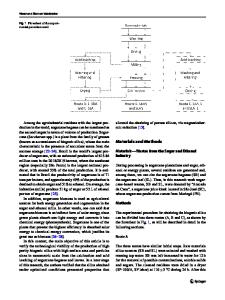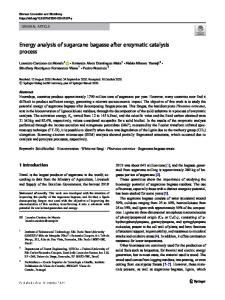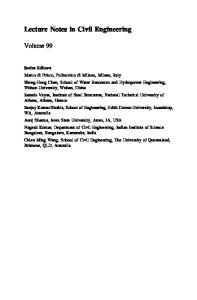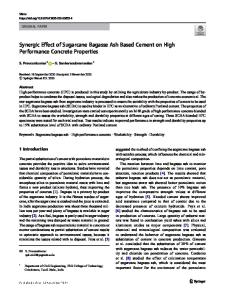Characterization of Clostridium thermocellum Isolates Grown on Cellulose and Sugarcane Bagasse
- PDF / 551,564 Bytes
- 13 Pages / 595.276 x 790.866 pts Page_size
- 96 Downloads / 213 Views
Characterization of Clostridium thermocellum Isolates Grown on Cellulose and Sugarcane Bagasse Liana R. Blume & Eliane F. Noronha & Jackeline Leite & Rayner M. L. Queiroz & Carlos A. Ornelas Ricart & Marcelo Valle de Sousa & Carlos R. Felix
Published online: 19 January 2013 # Springer Science+Business Media New York 2013
Abstract Although plant cell walls may be degraded by microbial free enzymes, many bacteria degrade cellulose via enzyme complexes called cellulosomes. The study of the structures and mechanisms of these large macromolecular complexes is an active and ongoing research topic, with the goal of developing methods to improve lignocellulosic biomass conversion using cellulosomes. The aim of the present work was to evaluate and characterize the holocellulolytic activities produced by two new isolates (ISO1 and ISO2) of the spore-forming thermophilic anaerobic bacterium Clostridium thermocellum, during growth on crystalline cellulose and sugarcane bagasse, in comparison with activities obtained from the C. thermocellum strain CthJW. The pH and temperature values for optimal growth of the isolates were pH 7 and 60 °C, respectively. The isolates produced cellulolytic, xylanolytic, and pectinolytic activities when cultured on crystalline cellulose or sugarcane bagasse, which have never been used previously as the sole carbon source for these bacteria. The profiles of secreted proteins for these isolates, ISO1 and ISO2, were quite different from those obtained for the standard strain CthJW and from each other, as shown by 2D gel electrophoresis maps, and these profiles also depend on the carbon source used. Different protein isoforms were also detected in the maps for all growth conditions and bacterial strains. MALDI-TOF mass spectrometry was used to identify the differentially expressed proteins
L. R. Blume : E. F. Noronha : J. Leite : C. R. Felix (*) Laboratory of Enzymology, Department of Cell Biology, University of Brasília, Brasilia, DF 70910-900, Brazil e-mail: [email protected] R. M. L. Queiroz : C. A. O. Ricart : M. V. de Sousa Laboratory of Biochemistry and Protein Chemistry, Department of Cellular Biology, University of Brasília, Brasília, DF 70910-900, Brazil
for ISO1 and ISO2 under growth in the presence of cellulose as carbon source. Twenty-five differentially expressed spots were identified and grouped into 8 functional categories: metabolism (20 %), motor function (20 %), protein synthesis (12 %), oxidative stress (16 %), secretory pathway (12 %), cellulose hydrolysis (4 %), protein folding (4 %), and defense (12 %). Spots 200 and 197, identified as a glycosyl hydrolase family member 9 and as a chaperone GroEL, respectively, were detected for all isolates and are potentially related to cellulosome architecture. Keywords Clostridium thermocellum . Cellulosome . Cellulase . Endoglucanase . Anaerobic . Biofuel
Introduction High oil prices and the possibility of a shortage of feedstocks have stimulated a search for alternative fuels that started at the beginning of the 1970s. In Brazil, the Natio
Data Loading...











